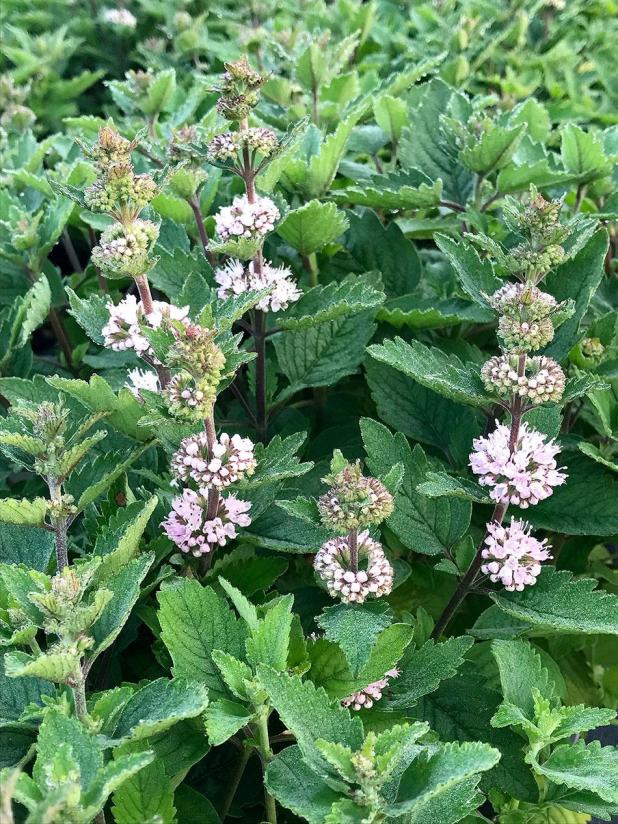
Beyond Pink’d is a pink spin on the traditional blue flowers of typical bluebeards.
—Elena Fennell photo
Get It Growing: Something blue & a little pink, too
If you are looking for a small, flowering shrub that tolerates drought and heat while attracting pollinators, look no further than bluebeard.
No, I am not talking about the French folklore tale from the 1600s. I’m talking about a low, mounding deciduous shrub from the mint family.
Commonly known as bluebeard or blue mist shrub (Caryopteris x clandonensis), it is a hybrid cross originally found in Asia that produces clusters of small, blue-purple, fluffy flowers in late summer into the fall on gray-green foliage.
This plant grows to an average size of 2- to 3-feet tall and wide.
The bright blue, showy flowers have a nice fragrance, and they bloom profusely for an extended season. The elongated base petal looks like a bright blue beard — hence the plant’s common name. It makes a nice addition to cut flower arrangements.
The foliage is finely textured, and colors are blue-green with a silver to white underside. They do not change color in the fall. There also are some golden- and chartreuse-leaved cultivars as well as variegated options.
Plants prefers six or more hours of direct sunlight for the most bloom production. Plants do not require deadheading to promote more blooms. They can be pruned at any time to shape the plant. Flowers are made on new growth. If you do get volunteer plants or your bluebeard outgrows its spot in your garden, it is an easy shrub to transplant.
Bluebeard is an excellent pollinator plant. It attracts many beneficial insects including bumblebees, honeybees, butterflies and even hummingbirds. Be aware of this when planting in areas of high traffic, as there soon will be many bumblebees and honeybees. The flowers produce seeds in fall and are an excellent source of bird food, bringing more ecosystem services to the landscape.
This easy-care, low- maintenance shrub is an ideal companion to other pollinator plants and perennials. It also can serve as a small foundation shrub planting for summer and fall interest. Plant in well-drained soil at a 3-to-5-foot spacing.
Because bluebeard prefers well-drained soils, it will tolerate drought. Crown rot can occur in soggy areas. In addition to being drought and heat tolerant, bluebeard is also pest and disease resistant.
Bluebeard does not have many fertilizer needs. In fact, if over fertilized, the plants become leggy and leafy, producing fewer flowers. They can benefit from organic matter such as compost, which can be mixed into landscape beds or side dressed in the spring.
Plants can be cut back in late winter to remove dead wood and to shape the plant. In addition to being a great landscape shrub selection, bluebeard does well in containers and can be complemented in pots with trailing annuals.
For more visual appeal, plant in groups or mass plantings. The shrubs can be planted as a border at the front of landscape beds or grown as a short hedge.
Use bluebeard in pollinator, butterfly, cottage, sensory or cut flower gardens. There are several great cultivars to choose from: traditional blue varieties Beyond Midnight, Dark Knight and Longwood Blue, plus pink options Pink Chablis and Beyond Pink’d.
The Louisiana Super Plant Shoal Creek vitex makes a great companion plant to bluebeard. The deep purple to blue flowers are pollinator magnets that are tough, fragrant, prolific and beautiful. Growing to a mature height of 10 to 12 feet, this shrub or small tree blooms in summertime. Much like the bluebeard shrub, vitex is very drought tolerant once established. It also is very low maintenance, thrives in hot and dry environments and is disease and pest tolerant.
